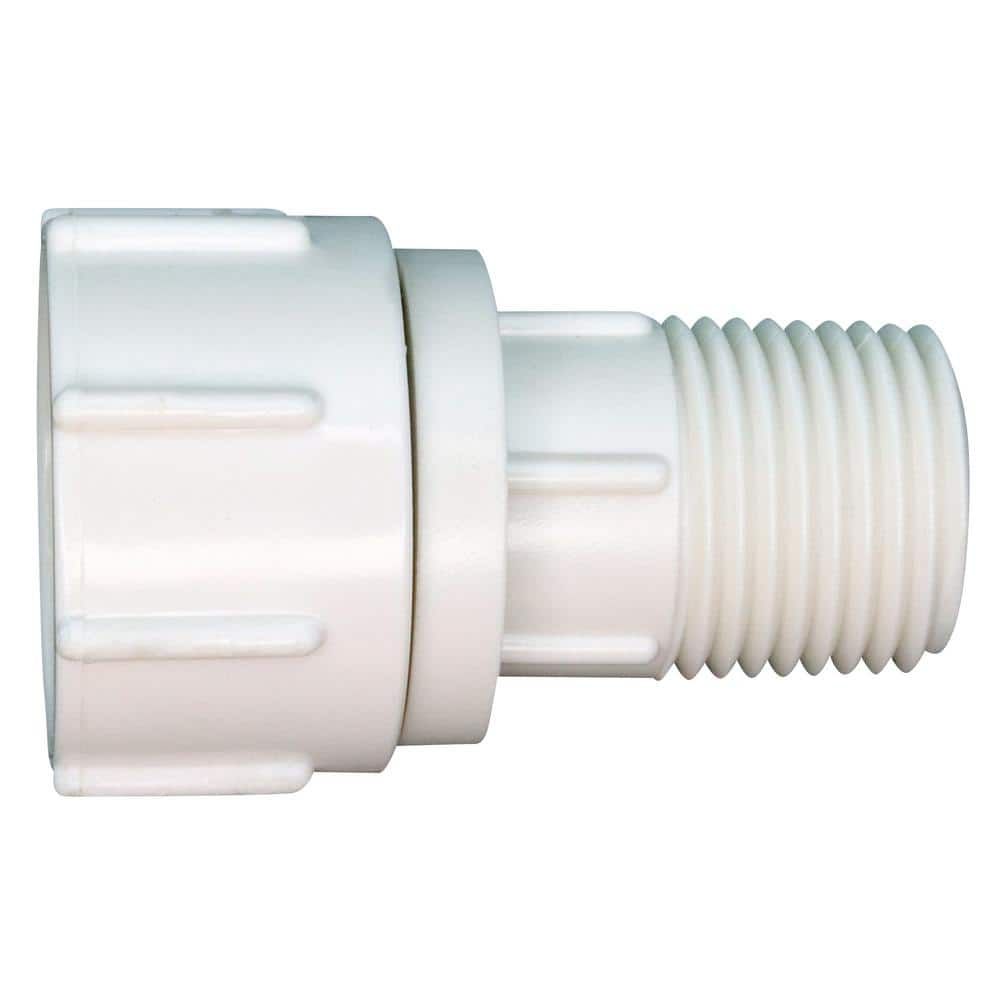Types of Pipe Fittings

Last updated October 10, 2024
Pipe fittings, also known as pipe connectors, attach one pipe to another in order to lengthen the run or change the flow direction in a plumbing system. These are used to combine, divert or reduce the flow of the water supply. They come in a variety of sizes to fit the pipe they will connect.
Pipe fittings' dimensions are important, and there are sizing standards to follow. Most have openings of the same size on each end. But some fittings are designed with different-sized openings and serve as the transition from one size pipe to another.
Table of Contents
Tee, Wye, Cross and Elbow Fittings
Coupling, Adapter, Bushing and Union Fittings
Trap and Flange Fittings
Cap, Plug and Nipple Fittings
Connection Methods
Types of Pipe Fitting Material
Tee, Wye, Cross and Elbow Fittings
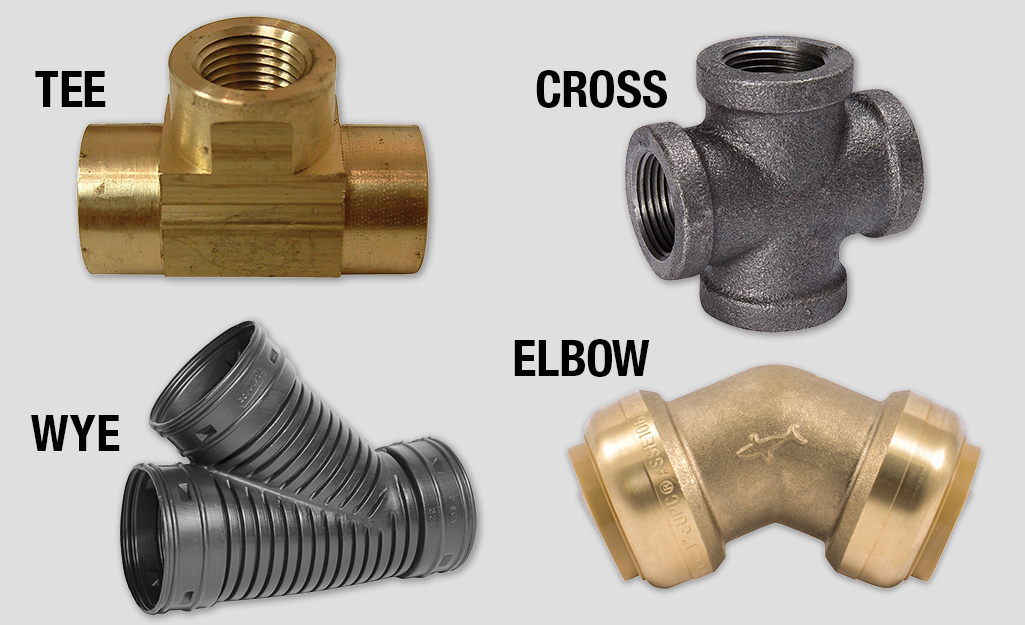
Tee and Wye Fittings - Tees and wyes are used to connect three pieces of pipe. Tees can have one inlet and two outlets at 90-degree angles, in the shape of a “T.” They are used to split a supply line, or they can combine two lines into one outlet. You often see tee fittings connected to potable water supply lines. A wye is shaped like a “Y,” with the two inlets coming together at roughly 45 degrees into a single outlet in drain applications. Sanitary wyes allow wastewater to enter a drainpipe from the side. The second part of the “Y” aligns with the pipe to allow sewer gases to vent upward.
Cross Fittings - Crosses have four openings for pipes – one inlet and three outlets, or three inlets and one outlet, depending on the need. These four-way fittings are less common and are used in some irrigation and sprinkler applications.
Elbow Fittings - Elbows change the direction of flow between two pipes. Common elbows have 90-, 60-, 45- and 22 1/2-degree bends and are used to make a turn. They can be joined together to move around obstructions in the pipe run.
Coupling, Adapter, Bushing and Union Fittings
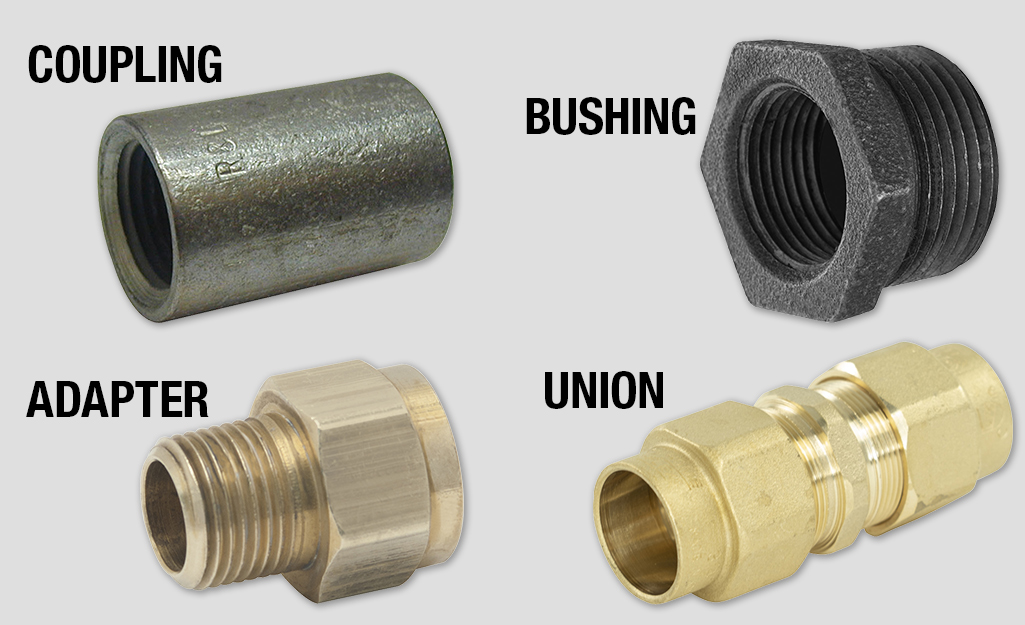
Coupling and Adapter Fittings - Pipe couplers slip over the outside of two pipes to connect them, usually permanently. A coupling can be a reducer, or a reducing coupling. This means they reduce flow by joining a larger pipe to a smaller size. Adapters are used when connecting two pipes of different types. For example, an adapter could be fitted on the end of a plain pipe to allow a threaded connection at the other side of the adapter.
Bushing Fittings - Bushings, sometimes called reducer bushings, are used for connecting two pipes of different sizes. The larger diameter of the bushing fits inside of the larger pipe. The smaller pipe is then inserted into the smaller end of the bushing.
Union Fittings - Unions are similar to couplings in that they connect two similar pipes. With pipe unions, a nut or threaded ring in the middle of the fitting is tightened to join two pipes. It can be easily removed by loosening the ring to disconnect the pipes. However, a coupling must be cut out to disconnect.
Trap and Flange Fittings
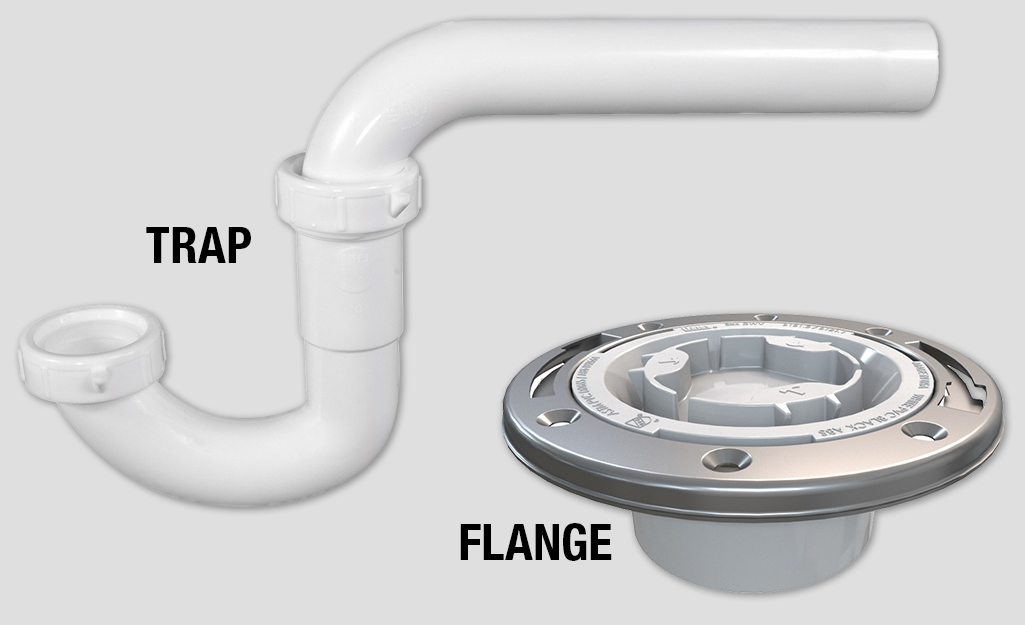
Trap Fittings - Traps are the horizontal dips or bends in drainage pipes found underneath kitchen and bathroom sinks.
They are shaped like a “U” or sideways “P” and serve two purposes. First, drain water is trapped in the arc to create a barrier that prevents sewer gases from rising into the home. Traps also catch debris to avoid clogging farther down the drainage system.
Flange Fittings - A flange is a flat, round fitting that creates a tight seal with bolts or clamps. They are used when pipes pass through walls, ceilings and floors. The most common flange for DIY plumbers is the closet flange, or toilet flange. This is what secures a toilet to the floor and also connects the toilet drain to the drain pipe.
Cap, Plug and Nipple Fittings
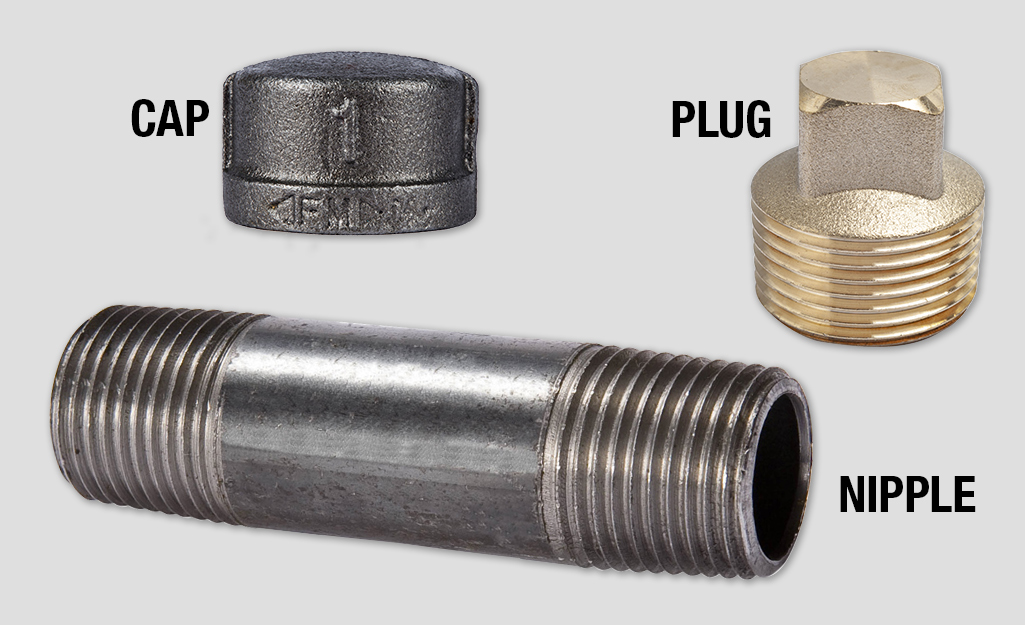
Cap Fittings - A cap fits over the end of a pipe to stop the flow of water or gas. These fittings can be used for the permanent termination point of a pipe. Or they're used temporarily to cut off supply during a plumbing project.
Plug Fittings - These are plugs used at the end of a pipe to seal the opening, similar to a cap. The difference is that a plug fits into the threaded pipe opening to make the seal, while caps fit over the opening. They are commonly found at cleanout locations for sewer systems.
Nipple Fittings - Nipples are short sections of pipe that are male-threaded at each end. They are used for connecting two female-threaded pipe ends or fittings.
Connection Methods

Pipe joints can be secured in a number of ways, depending on the material, features and functions of the pipes and the fittings being used. Connection methods include:
Push to connect fittings, sometimes called push-to-fit or click-to-connect. These fittings make installation quick and easy for DIY plumbing projects. They have a special O-ring and metal teeth inside to grip and get a watertight connection in low-pressure situations. They can be used in certain situations with PEX, PVC and copper pipe.
- Threaded Fittings: Threaded pipe fittings can be twisted together for a tight fit. Female threaded pipes and fittings have threading on the inside of the fitting. They fit around male connections, which have thread on the outside. Considering a bottle with a twist-off lid, the bottle has male threads and the lid is female.
- Sweat Fittings: These are permanent, leak-free pipe joints made when solder is melted, or “sweated,” around the seam of brass or copper fittings and pipes.
- Slip Fittings: These are plastic pipes and fittings with smooth walls that can easily slip together. They are affixed using a primer and quick-drying solvent cement.
- Compression Fittings: These fittings have a "ferrule," a threaded body, nut and sleeve. They are used for compression, to squeeze pieces of pipe together for a tight joint.
- Flare Fittings: These fittings are used for high water pressure and gas applications. They consist of a flare nut and a cone-shaped fitting that connects the pipe and fitting after the pipe has been “flared” with a special tool.
- Clamp Fittings: With these fittings, a clamp is tightened around the pipe after the fitting has been inserted.
- Crimp Fittings: For this fitting, a special tool is used to tightly squeeze, or crimp, a metal ring around pipe after the fitting has been inserted.
Types of Pipe Fitting Material
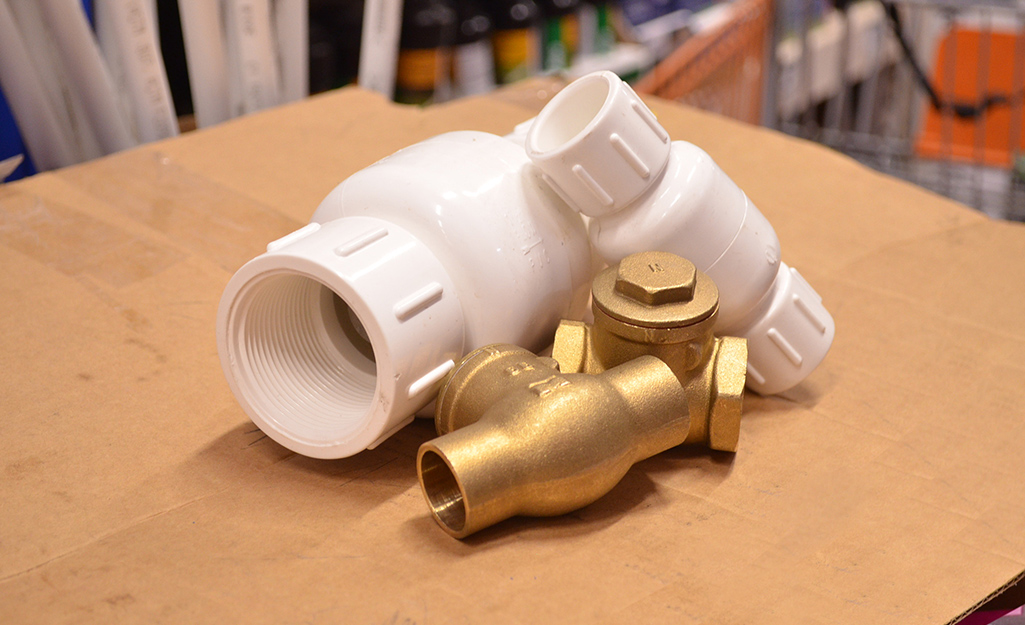
Different types of plumbing fittings come in the same material as their pipe counterparts, whether CPVC, brass or galvanized. In general, use PVC fittings for PVC pipe, copper fittings for copper pipe and so on.
There are some exceptions and items to note:
- PEX fittings can be found made with either metal or plastic and are used for PEX pipes.
- Some types of pipe fittings are designed to transition a pipe of one material to a pipe made from another material.
Tip: PVC should be used only for cold water applications because high temperatures can cause it to warp.
This guide describes pipe fittings used for plumbing systems. But what is a pipe fitting? Pipefitters and plumbers share many of the same skills, but pipefitting and plumbing are different trades. Pipefitters work in a variety of industrial settings, such as refineries and manufacturing, where material is transported by pipes from one area to another.
Need help identifying a tool or material? Find products fast with image search in The Home Depot Mobile App. Snap a picture of an item you like, and we'll show you similar products.


